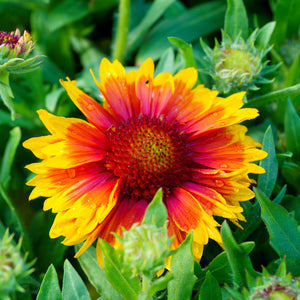The Gaillardia Guide
Gaillardia, commonly known as blanket flower, is a vibrant, sun-loving perennial that delivers bold, daisy-like blooms from early summer through fall. With its cheerful color palette—ranging from fiery reds and oranges to sunny yellows—Gaillardia adds long-lasting energy to borders, containers, and wildflower-style plantings. Beloved for its extended bloom period and drought resistance, Gaillardia is an excellent choice for pollinator-friendly and low-maintenance landscapes.
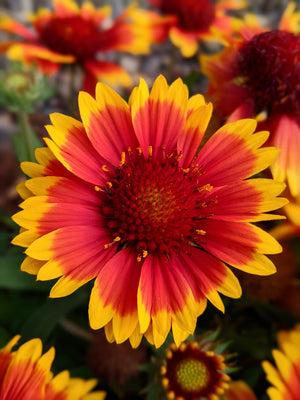
About
Gaillardia is a genus in the Asteraceae family and includes both annual and perennial species native to North and South America. The most widely grown garden forms are hybrids of Gaillardia aristata and Gaillardia pulchella, commonly referred to as Gaillardia x grandiflora. These hybrids are prized for their prolific flowering, compact growth habit, and bright, multi-colored blooms.
Notable varieties include the long-blooming 'Arizona Sun', with fiery red and yellow petals; the compact and heat-tolerant 'Mesa Bright Bicolor' and 'Mesa Peach', which are part of the award-winning Mesa series; and selections from the SpinTop series such as 'Red', 'Yellow Touch', and 'Orange Halo', known for their tidy mounding habit and vibrant hues. For an especially rich look, try Gaillardia 'Sunset Cutie' or the deeper tones of 'Arizona Red Shades'.
Gaillardia is a favorite of bees, butterflies, and other beneficial insects, while its coarse texture and aromatic foliage help deter deer and rabbits. It’s also valued for its ability to thrive in hot, sunny locations and poor soils.
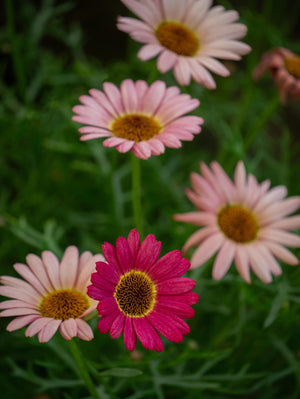
PLANTING
Gaillardia thrives with minimal input, making it ideal for low-maintenance plantings or tough garden spots:
- USDA Hardiness Zones: Hardy in Zones 3–10, depending on the variety.
- Soil: Well-drained soils are essential. Tolerates poor, sandy, or rocky soil. Avoid heavy clay or overly wet sites.
- Sunlight: Requires full sun (6+ hours per day) for optimal flowering.
- Watering: Water regularly until established; drought tolerant once mature.
- Spacing: Space 12–18 inches apart, depending on the variety.
- Planting Time: Spring or fall is ideal for transplanting, with seeds sown after last frost.
To establish from seed, sow indoors 6–8 weeks before the last frost or directly outdoors once soil temperatures reach 65°F. Cover lightly and keep moist until germination. Established plants benefit from mulch to suppress weeds but avoid mulching too close to the crown to prevent rot.
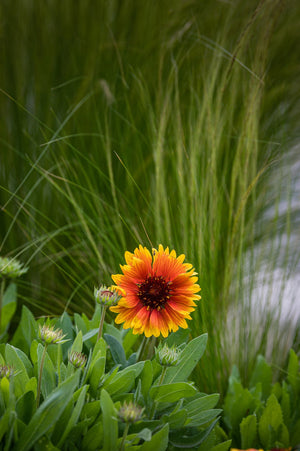
CARE
With proper siting and a few simple practices, Gaillardia will reward you with a long season of blooms:
- Watering: Moderate water is needed during dry spells, but do not overwater. Root rot can occur in soggy soil.
- Fertilizing: Not typically necessary. If desired, apply a balanced fertilizer in spring.
- Deadheading: Regularly remove faded flowers to encourage continuous blooming.
- Pruning: In late fall or early spring, cut back spent stems to tidy the plant and encourage vigorous regrowth.
- Division: Divide every 2–3 years in spring or early fall to maintain vigor and control spread.
- Pest & Disease: Generally pest-free, though crown rot can occur in poorly drained soils. Occasional aphids may be present but are not usually problematic.
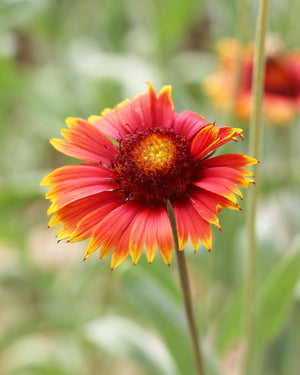
HOW TO USE
Gaillardia’s warm colors and mounding habit make it an excellent component of sun-drenched gardens:
- Borders and Beds: Use as a bright, low-growing front-of-border accent. Combine 'Arizona Apricot' or 'Mesa Yellow' with contrasting blues from salvia or veronica.
- Pollinator Gardens: Blanket flower’s long bloom season makes it a consistent nectar source for butterflies and bees.
- Containers: Compact cultivars like 'SpinTop Red Starburst' are ideal for pots and mixed container plantings.
- Cottage and Wildflower Gardens: Mix with echinacea, rudbeckia, and coreopsis for a naturalized, meadow-inspired look.
- Drought-Tolerant Landscapes: Plant with agastache, sedum, or yarrow in xeriscapes or dry borders.
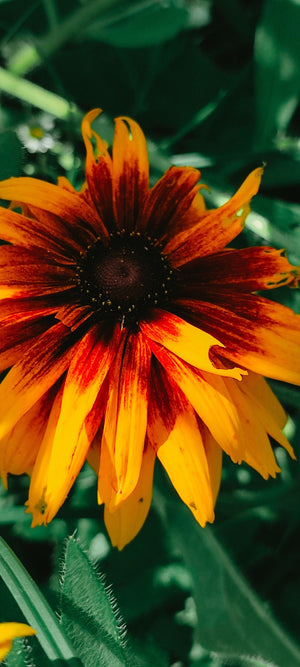
Common Questions
- When does Gaillardia bloom? Most varieties bloom from early summer through fall, often until frost.
- How to deadhead Gaillardia? Snip off spent flowers just above the next leaf node to encourage new blooms.
- Is Gaillardia a perennial? Many garden cultivars are hardy perennials, though some may be short-lived. Some are treated as annuals in colder zones.
- Are Gaillardia deer resistant? Yes, they are generally unappealing to deer due to their texture and scent.
- How to care for Gaillardia? Provide full sun, well-drained soil, and deadhead regularly for best performance.
- How to grow Gaillardia? Start from seed indoors or direct sow after frost; transplant in spring or fall and keep soil evenly moist until established.
- Is Gaillardia toxic to dogs? Gaillardia is not considered toxic to dogs.
- Is Gaillardia toxic to cats? Gaillardia is not considered toxic to cats.
- Do rabbits eat Gaillardia? Gaillardia is typically rabbit resistant.
Conclusion
Gaillardia brings bold, carefree color to summer gardens with minimal effort. Its long bloom season, pollinator appeal, and tolerance of poor soils make it an excellent choice for gardeners seeking beauty with low maintenance. With vibrant selections like 'Mesa Peach', 'SpinTop Orange Halo', and 'Arizona Sun', Gaillardia proves that tough plants can also be stunning.
The Gaillardia Collection
Sold Out
Sold Out
Sold Out
Sold Out

